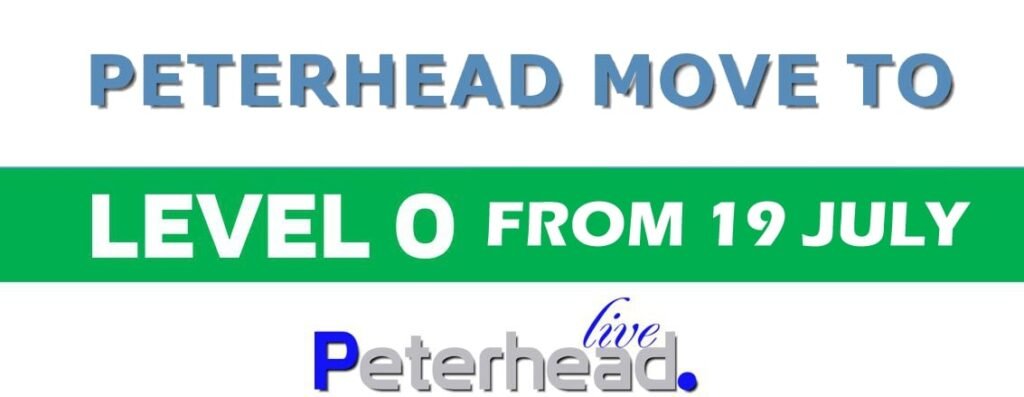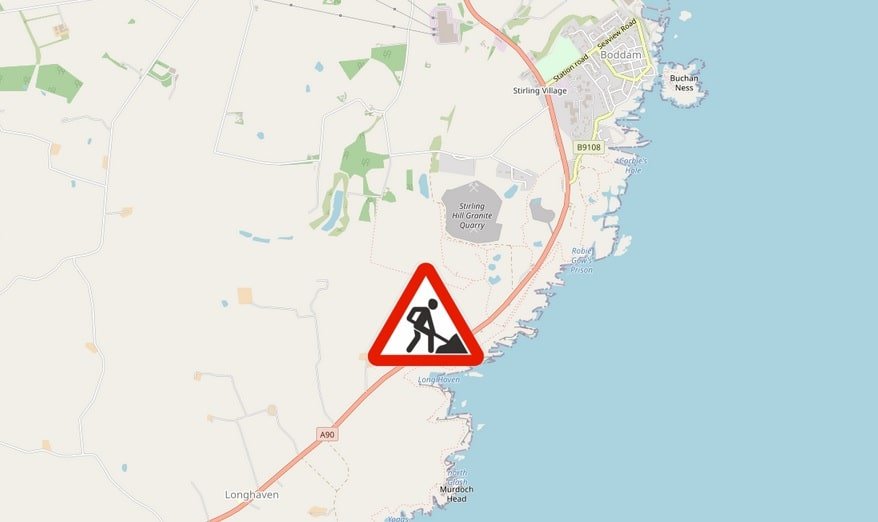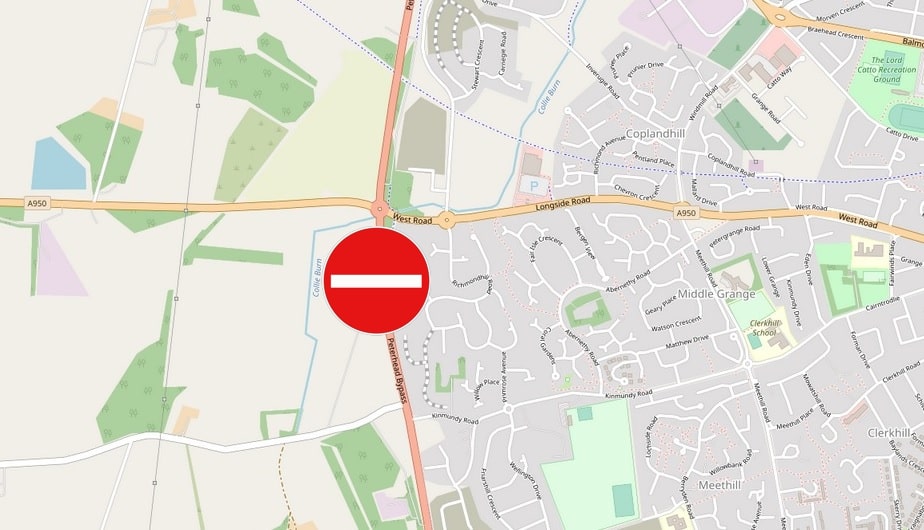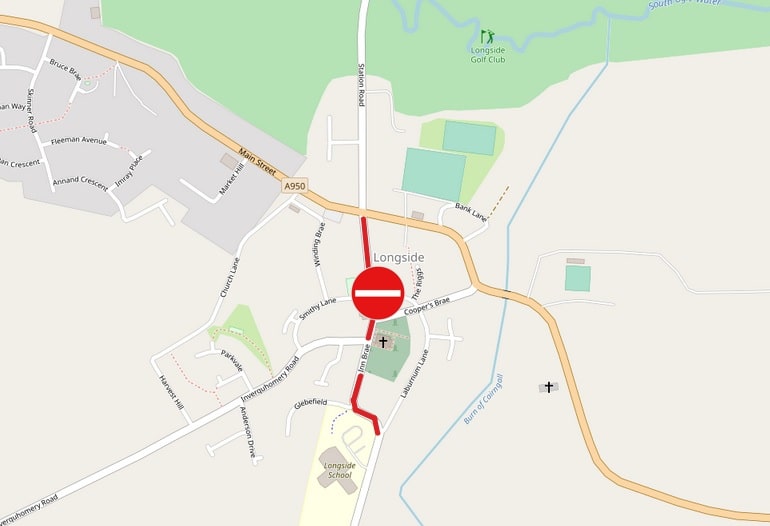Family Funfair C&S Leisure New in Peterhead from 19th July
Family Funfair C&S Leisure
Family Funfair C&S Leisure

Scottish Government covid protection levels update
From Monday (19 July) Scotland will move to Level 0, with modifications on previous guidance:
Scotland will move to Level 0 with Main changes new things:

Check the level for an area using the postcode tool.
At Level 0:
Everyone is encouraged to get tested, as around 1 in 3 people with COVID-19 do not have symptoms. Testing is free and results are available in around 30 minutes. Read guidance on getting tested.
Places and business that can open at Level 0 include:
Places and business that must close at Level 0 include:

| Start Date – Time | 12 Jul 2021 – 09:30 |
| End Date – Time | 12 Jul 2021 – 15:30 |
| Location | Off Network to A90 (Junction R A975 to Junction R B9108 Boddam), Southbound |
| Description Works: | Carriageway Patching |
| Traffic Management: | Lane Close |
More information: https://trafficscotland.org

| Start Date | 10 July 2021 evening |
| End Date | 11 July 2021 morning |
| Location | Off Network to A90 (Invernettie roundabout to A950 roundabou), Northbound |
| Description Works: | Resurfacing Traffic |
| Management: | Road Closure. |
| Diversion: | Diversion via A950 to A982. Then continue on A90, Peterhead |
More information: https://trafficscotland.org
If you’re a parent or carer who’s looking to build confidence and learn new skills then our online course “Foyer Families” is just for you.
“Foyer Families” – FREE online course starts on Tuesday 24th August within Aberdeenshire and runs for 16 weeks.
It’s a great opportunity to gain important skills and accredited qualifications while cultivating a meaningful team experience– at a pace that works well for people with young children and busy lives!
FREE online course – Foyer Families is a 16-week fully funded programme created and delivered by Aberdeen Foyer which will help you to:
FREE online Course dates
This course will run from the 24th of August 2021 to the 10th of December 2021
Every Tuesday, Wednesday & Thursday
9.30am to 2.30pm
Aberdeen Foyer is working in partnership with North East Scotland College to deliver a City & Guilds Extended Level 1 Certificate in Employability skills. REHIS Food Hygiene and Pediatric First Aid certificates will also be available during the course. Child development workshops will also be delivered.

Additional support such as childcare provision and access to digital kit can also be provided during the course.
The course will be delivered online with access to course leaders and personalised support.
Is this course for me?
If you Are a parents/carer with children under 12 looking to do any of the following:
Then this FREE online course is for you.
As part of Foyer Families you’ll complete 5 City and Guilds units:

FREE online Course Content
Week 1/2: Getting to know you
A chance to get to know one another and set the foundation for an exciting journey with Foyer Families.
Week 3/4: Building personal confidence
Working together to understand personal confidence, while branching out into related activities to help build your own personal confidence.
Week 4/5: Contributing to own healthy living
Looking closely at what contributes to a healthy lifestyle. Guided cooking sessions and Food Hygiene will be used to support your learning along with a range of relevant activities.
Week 6/7: Effective skills and qualities
Working together to highlight and build upon existing skills to prepare you for the working and learning environment.
Week 8/9: Managing personal finance
Focusing on planning and preparation you will gain the skills to develop budget plans and financial inclusion sessions will help you to manage your finances.
Week 10/11/12: Coping with change
Encourages you to explore the different types of change, including the impact of change and strategies to help you to cope with change.
Week 13/14: Skills development
Helping you to build your CV for potential job opportunities and preparing you for mock interviews and build progression pathways.
Week 15/16: What’s next?
Reviewing 16-week programme with discussion about future steps and finally your graduation!
Katie Summers (Aberdeenshire) M: 07979 199 896
katie.summers@aberdeenfoyer.com
We can even help with childcare and digital kit if needed.
If you think this might be for you, or a family member/friend – then please get in touch by emailing
Eligible families can apply for a grant of at least £120 to help with the cost of school uniforms.
The Scottish Government and local authority leaders have reached an agreement to increase the national school clothing grant to a minimum of £120 per eligible primary school pupil and £150 per eligible secondary school pupil. This will be supported by £11.8 million of additional funding to local authorities.
The announcement marks another commitment for the first 100 days of this Government.
Education Secretary Shirley-Anne Somerville said:
“School uniforms can place a significant financial burden on families, some of whom are already facing additional hardship as a result of the pandemic.
“This school clothing grant will help to relieve some of that pressure for around 145,000 families and it will help to ensure that all children can go to school feeling comfortable, confident and ready to learn.”
COSLA Children and Young People’s spokesperson Councillor Stephen McCabe said:
“Councils and schools are working to tackle the costs of the school day, ensuring that all children are able to fully participate in their education. Working with the Scottish Government, we are pleased that the national minimum school clothing grant has been increased and that families can get extra support as we continue on the road to recovery from the pandemic.”
Eligible families can apply for the school clothing grant through their local council.


Essential resurfacing works
| Start Date: | 5 July |
| Promoter: | Aberdeenshire Council |
| Location: | Longside, Inn Brae (C39B) |
| Description Works: | Essential resurfacing works |
| Diversion Route: | A diversion will be in place via the C39B southward to C38B, eastward to C56B at Parkhill, northward to A950 at Flushing, westward to Longside and vice-versa. |
| Estimated Duration: | 12 Days |
Hospital Visiting changes